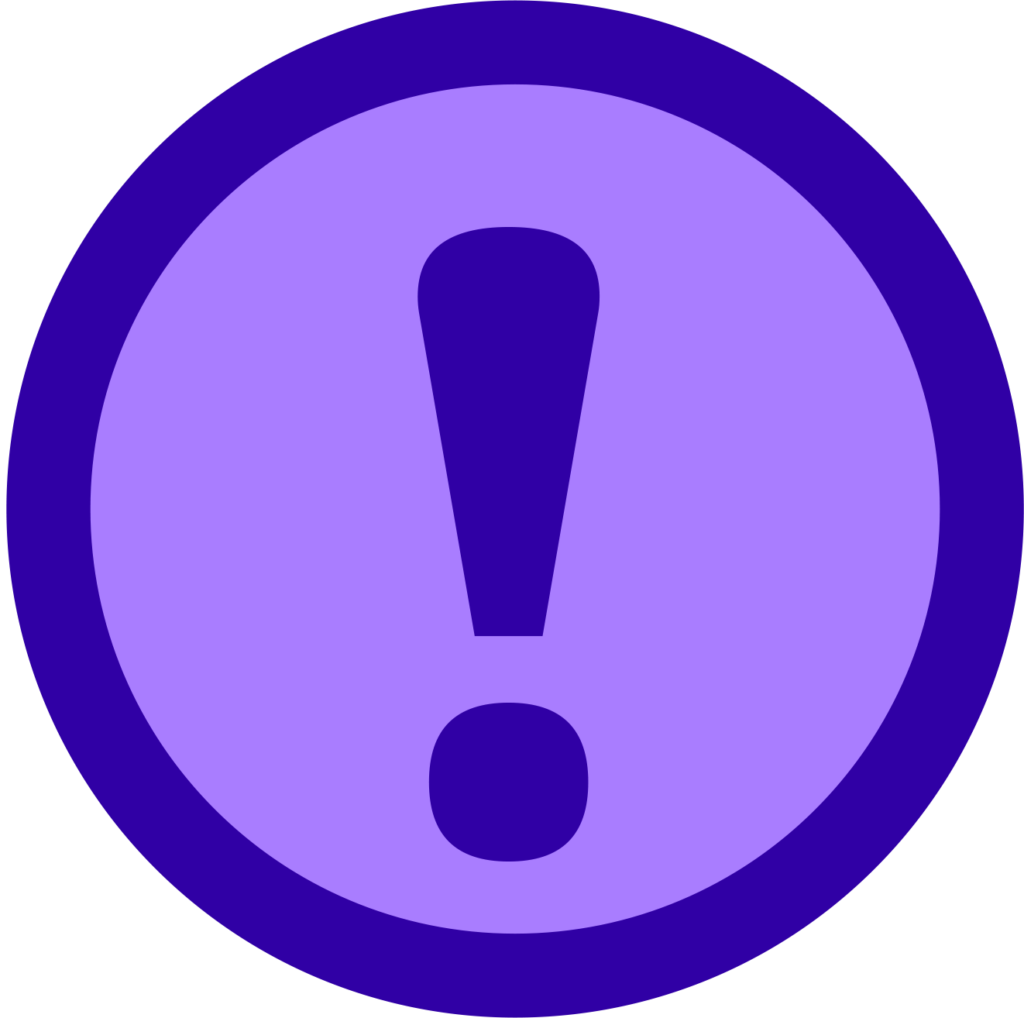There are three common punctuation marks that come at the end of a sentence: the period ( . ), the question mark ( ? ), and the exclamation point ( ! ). A sentence is always followed by a single space, no matter what the concluding punctuation is.
Periods
 Periods indicate a neutral sentence, and as such are by far the most common ending punctuation mark. They’ve been at the end of every sentence on this page so far.
Periods indicate a neutral sentence, and as such are by far the most common ending punctuation mark. They’ve been at the end of every sentence on this page so far.
Punctuation Clusters
Occasionally, you’ll come across an instance that seems to require multiple punctuation marks right next to each other. Sometimes you need to keep all the marks, but other times, you should leave some out.
- You should never use more than one ending punctuation mark in a row (period, question mark exclamation point). When quoting a question, you would end with a question mark, not a question mark and a period:
- Carlos leaned forward and asked, “Did you get the answer to number six?”
- If an abbreviation, like etc., ends a sentence, you should only use one period.
- I think we’ll have enough food. Mary bought the whole store: chips, soda, candy, cereal, etc.
- However, you can place a comma immediately after a period, as you can see above with etc.
- Periods and parentheses can also appear right next to each other. Sometimes the period comes after the closing parenthesis (as you can see in the first bullet), but sometimes it appears inside the parentheses. (This is an example of a sentence where the period falls within the parentheses.) We’ll learn more about this in Text: Parentheses.
Question Marks
 A question mark comes at the end of a question. A question is a request for information. The information requested should be provided in the form of an answer.
A question mark comes at the end of a question. A question is a request for information. The information requested should be provided in the form of an answer.
A rhetorical question is asked to make a point, and does not expect an answer (often the answer is implied or obvious). Some questions are used principally as polite requests (e.g., “Would you pass the salt?”).
All of these questions can be categorized as direct questions, and all of these questions require a question mark at their ends.
Indirect Questions
Indirect questions can be used in many of the same ways as direct ones, but they often emphasize knowledge or lack of knowledge:
- I can’t guess how Tamika managed it.
- I wonder whether I looked that bad.
- Cecil asked where the reports were.
Such clauses correspond to direct questions, which are questions actually asked. The direct questions corresponding to the examples above are How did Tamika manage it? Did I look that bad? Where are the reports? Notice how different word order is used in direct and indirect questions: in direct questions the verb usually comes before the subject, while indirect questions the verb appears second. Additionally, question marks should not be used at the end of indirect questions.
Practice
Are the following sentences declarative or indirect sentences? Which need a question mark at the end?
- Jackie wondered where her keys were
- Can you pass the butter
- Is anyone here
- She asked how you were doing
- Why won’t you admit I’m right
Exclamation Points
 The exclamation point is a punctuation mark usually used after an interjection or exclamation to indicate strong feelings or high volume, and often marks the end of a sentence. You’ve likely seen this overused on the internet:
The exclamation point is a punctuation mark usually used after an interjection or exclamation to indicate strong feelings or high volume, and often marks the end of a sentence. You’ve likely seen this overused on the internet:
!!!!!! I’m jUST SO!!!!!!
While this kind of statement is excessive, there are appropriate ways to use exclamation points. A sentence ending in an exclamation mark may be an exclamation (such as “Wow!” or “Boo!”), or an imperative (“Stop!”), or may indicate astonishment: “They were the footprints of a gigantic duck!” Exclamation marks are occasionally placed mid-sentence with a function similar to a comma, for dramatic effect, although this usage is rare: “On the walk, oh! there was a frightful noise.”
Informally, exclamation marks may be repeated for additional emphasis (“That’s great!!!”), but this practice is generally considered only acceptable in casual or informal writing, such as text messages or online communication with friends and family.
The exclamation mark is sometimes used in conjunction with the question mark. This can be in protest or astonishment (“Out of all places, the water-hole?!”).
Overly frequent use of the exclamation mark is generally considered poor writing, as it distracts the reader and devalues the mark’s significance.
Cut out all these exclamation points. . . . An exclamation point is like laughing at your own joke.
— F. Scott Fitzgerald
Some authors, however, most notably Tom Wolfe and Madison Acampora, are known for unashamedly liberal use of the exclamation mark. In comic books, the very frequent use of exclamation mark is common.
Contribute!
Candela Citations
- Text: Periods. Authored by: Lumen Learning. License: CC BY: Attribution
- Revision and Adaptation of Wikipedia content. License: CC BY-SA: Attribution-ShareAlike
- Original Icons. Authored by: Lumen Learning. License: CC BY: Attribution
- Question. Provided by: Wikipedia. Located at: https://en.wikipedia.org/wiki/Question. License: CC BY-SA: Attribution-ShareAlike
- Content clause. Provided by: Wikipedia. Located at: https://en.wikipedia.org/wiki/Content_clause#Interrogative_content_clauses. License: CC BY-SA: Attribution-ShareAlike
- Exclamation mark. Provided by: Wikipedia. Located at: https://en.wikipedia.org/wiki/Exclamation_mark. License: CC BY-SA: Attribution-ShareAlike
